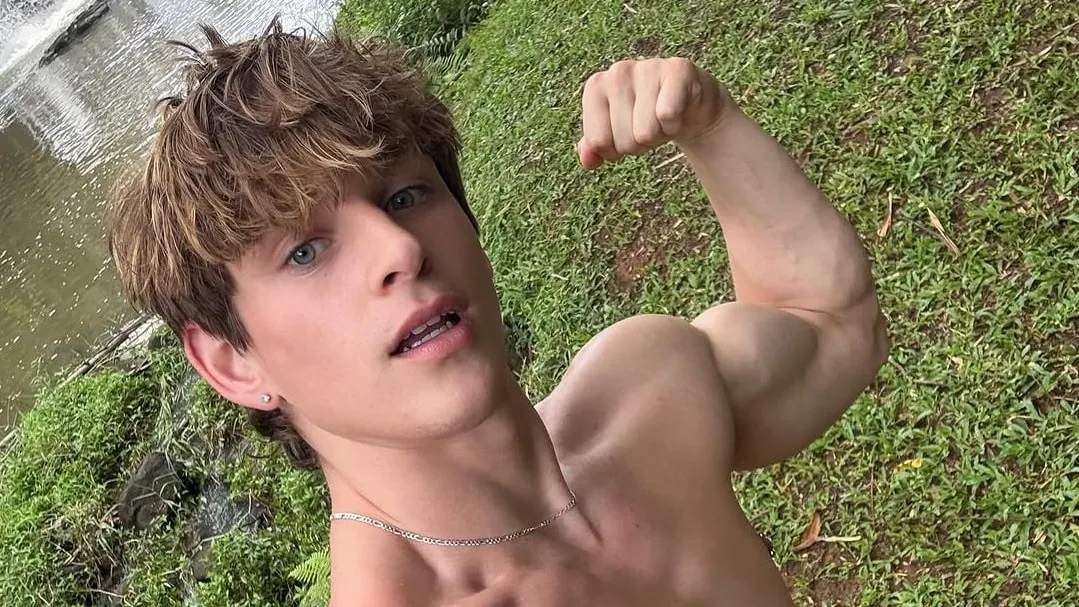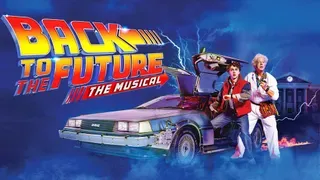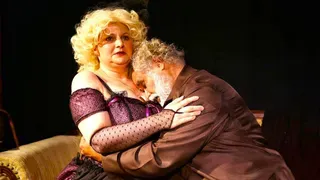July 15, 2007
Outsports Revolution: Truth & Myth in the World of Gay Sports
Steve Weinstein READ TIME: 6 MIN.
Eight years ago, in August of 1999, Jim Buzinski and Cyd Zeigler Jr. founded Outsports.com. Previously, there had never been an outlet dedicated to gays and sports. Today, the website is widely acknowledged by gay and straight media, sportswriters and sports fans as the go-to site for news and information.
The two founders, meanwhile, have become spokespersons for their cause, which is threefold: acceptance of out-gay professional athletes; fostering gay sports fans' interests; and promoting amateur gay sports teams and leagues.
Now, as part of their mission, the two men (let's shorten their names to a collective "B&Z") have come out with a large book from Alyson. The title pretty much sums of the authors' worldview: The Outsports Revolution. B&Z see themselves as having transformed the way the world looks at gay athletes and the world of gay sports. And, to a large extent, they indeed have.
But the subtitle, Truth and Myth in the World of Gay Sports, is more revealing. It neatly encapsulates the very real hurdles that gay men, especially, still have to overcome before they are accepted in the world of professional athletics. The subtitle also points up one of B&Z's greatest bugaboos--the stereotype of gay men as limp-wristed aesthetes whose interest in sports stops with jock straps and locker-room fantasies.
I should add a Seinfeldian "not that there's anything wrong with that." The book does indeed give a nod to the welter of same-sex innuendo that has attached itself to sports teams. The book doesn't shy away from acknowledging the locker-room fantasies that have fueled hundreds of porn movies, or the interest gay sports fans take in their idols' physiques.
The book is divided neatly into three parts that roughly parallel the three levels of involvement mentioned above. Part I, The Place of Gay Sports in Society, discusses the way in which gay sports fans have felt rejected by the larger sports world. Part II, Elite Athletes and Big-Time Sports, delves into the ongoing controversy about coming-out while playing a team sport. Part III, Getting in the Game, discusses how and why gay men and lesbians have formed sports teams and leagues of their own, as well as the role of the Gay Games and similar organizations in fostering gay athletes at the amateur level.
I should probably preface any discussion of the book itself with the disclosure that Cyd worked for me when I was the editor of the New York Blade. We've remained friends. We play Bridge together, and I have been fortunate enough to attend several parties he and his partner Dan have held in their Chelsea apartment, including their annual Super Bowl extravaganza (the book even has a chapter on how to hold one of these male-bonding events). Occasionally, I've even taken my eye off the guys watching the game to watch the game!
But I'm a reviewer, and a review has to review. So I will say that, although I found the book largely enlightening, entertaining, and well written, I was a little disappointed in the overall execution. Although there is some original writing and reporting, a lot of the book felt like a cut-and-paste job primarily taken from the website and a few other sources.
This is not in itself a damning criticism. Unless you have been reading Outsports.com daily since its inception (and perhaps even then), you're going to get a lot of out of the excerpts reprinted here. But some of the snippets sidetrack the central argument instead of illuminating it, or don't add enough to the general discussion.
To give only one example, a man describes coming out while working at ESPN as an assistant editor. The guy wrote a story on ESPN.com about his sexuality. The other men in the office congratulated him and offer support. This is what we call in journalism a "dog bites man" story; nothing much happens.
These examples, however, are overshadowed by other snippets that do prove enlightening and revealing. I like the fact that a straight sports reporter, Michael O'Keeffe of the New York Daily News, wrote the introduction, because one of B&Z's central points is that gay sports and gay athletes hardly exist in a vacuum; rather, they constantly interact with their straight counterparts, and if there is ever to be open acceptance, the impetus will have to come from straight allies much more than gay agitation.
Another of my qualms is that there is much more discussion of male than female athletes. I'm not big on equal time or political correctness; rather, I bring this up because much of the gay-rights action in pro sports has come from the female side of the divide. Other than the fact that Outsports.com itself is probably dominated by male viewers, B&Z make the point that women athletes have the exact problem of their male counterparts: All male athletes are considered macho and therefore they must be heterosexual; female athletes are considered butch, and therefore there's a presumption that they're lesbian.
While I find this dichotomy between the sexes fascinating, I do wish the B&Z had devoted more space than one page to Martina Navratilova. Cyd has pointed out that, other than a brief history of gays in pro sports, the book is not meant as a history, but rather a discussion of the current state of sports. Maybe so, but the fact remains that Navratilova was not only the first professional athlete to come out while still playing, she did it while at the top of her game. And not only is she the biggest one to have come out while still playing, she was the top athlete in women's tennis at the time. Many consider her the top athlete in the history of her sport. And, although she was outed, she immediately turned from announcement of her sexual orientation to gay activism. She also made it cool for women to have muscles; she even made it sexy.
Nor did I see a mention of the asinine--and roundly criticized--comment by a male official in the Ladies' Professional Golf
In a similar vein, I would have liked to have seen a more in-depth discussion of the film Personal Best, which I would consider the Citizen Kane of gay sports films. The 1982 Robert Towne film encapsulates a lot of the issues surrounding gays in sports. Taking place in the world of Olympic sprinters, Mariel Hemingway's character falls under the spell of a lesbian mentor, but she ultimately falls in love with a straight runner. The film brings up the sexual nature of mentoring relationships, the implication that women athletes have lesbian tendencies, and the greater openness among female athletes to same-sex experimentation. I'd rather have seen more about films like this, and less about peripheral movies like Brokeback Mountain, which is a great movie, but has nothing to do with gays in sports.
As long as I'm discussing entertainment, which is covered in some detail in the book, I have to make a case for a play that I personally wasn't crazy about but that undeniably had an effect on the wider culture. I realize that some people would not consider the theater to be popular entertainment, but Richard Greenberg's groundbreaking dramedy, Take Me Out, brought Broadway audiences a look at a pro baseball star's coming out (as well as a close look at the actors' private parts in the infamous shower scene). And where the hell is Peter Lefcourt's The Dreyfus Affair, a best-selling novel that, like Patricia Warren's seminal The Front Runner, is in never-ending big-screen turnaround? (Among those rumored for the leads: Richard Gere, Brat Pitt, Leonardo DeCaprio, and Matt Damon.)
I also would have liked a discussion of the far-greater openness of European athletes to indulge in some fans' unabashed homoeroticism. Case in point: those French rugby players posting in the buff (and are they buff!) in the Dieux de Stade ("Gods of the Stadium") calendars, books, and videos. I know Cyd's well aware of this since he still has my video! But seriously, there's no question that the Europeans are way ahead of us on this one. Maybe Beckham's move to Los Angeles will have some positive effect on the way athletes allow themselves to be ogled by gay fans.
A bigger issue that gets short shrift is HIV+ athletes. I don't remember the book containing a discussion of the ridiculous "controversy" over Olympic diver Greg Louganis getting blood on a diving board. Nor do I recall B&Z talking much about Magic Johnson or boxer Tommy Morrison. (This also points up to another complaint, the lack of an index.) Neither Johnson nor Morrison is gay, but their HIV status is something that is certainly of interest to gay sports fans. The association of gay men with HIV may rank as important as the "locker-room issue" as an excuse for some gay athletes not to come out.
OK, so I've been venting. But that's only because when you read a truly good book, you become engaged with the authors. The fact that B&Z can inspire so much passion in someone who is distinctly not a big sports fan (my sports reading is pretty much confined to Exercise for Men Only and Men's Workout) says a lot for their book.
This is a book that will probably enthrall you, fascinate you, anger you and motivate you. It might even get you out to the stadium and enjoy some peanuts and Cracker Jack!
Steve Weinstein has been a regular correspondent for the International Herald Tribune, the Advocate, the Village Voice and Out. He has been covering the AIDS crisis since the early '80s, when he began his career. He is the author of "The Q Guide to Fire Island" (Alyson, 2007).







